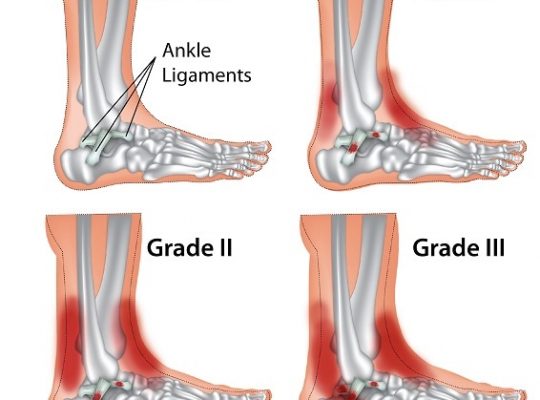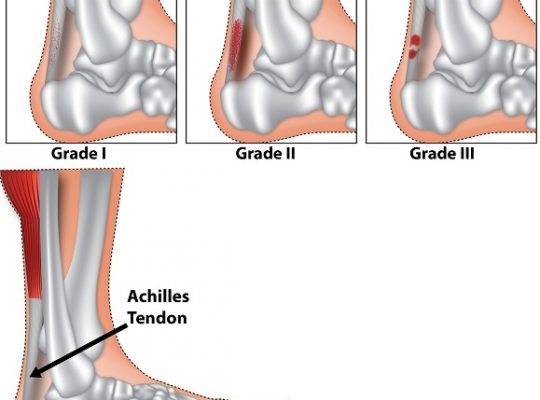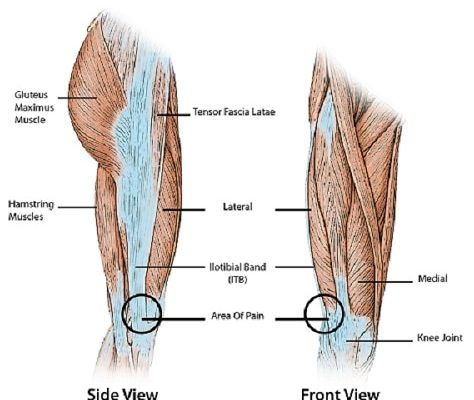What is stamina?
Stamina, otherwise known as endurance is in sport quite more than a monotonous 10km run. It is often defined as the body’s resilience and ability to tolerate and bear a continual activity over a long period of time without succumbing to fatigue, injury or trauma.
Stamina is such a broad and disciplined field that sprints over 100 meters are often counted as requiring good stamina. Having a good level of endurance can additionally provide an increased regenerative ability and mental resilience.
Types of stamina
Stamina is usually divided into two areas, basic stamina and special stamina.
- The basic stamina is a base of endurance performance. This includes all forms of sport and health, preventive sport, rehabilitation sport and developing general fitness. In addition, the basic stamina is a prerequisite for the development of further endurance capabilities. This means a 100 meter rotor requires a basic endurance in the same degree as a cyclist. Acquiring a solid basic endurance sport takes place with non-specific actions, and is usually acquired through jogging, running, swimming or cycling.
- Aiming to develop one’s stamina to improve performance in a particular sport however is called special stamina, and is particularly common for sports such as (tennis, football, handball, basketball swimming,etc.)Depending on the sport in question, training to improve special stamina is in turn divided into short-term endurance, medium-term stamina and long-term endurance.
Below are the biological processes in sport stamina exercises.
Energy production
The human body works `very much like a motor. It needs fuel (ATP / adenosintripohosphate) to provide adequate power to operate at an acceptable level. Power is the endurance in this case. However, the body does not have an engine only a ‘petrol tank’, wherein three types of “fuel” are available.
The smallest energy storage in the human body is the creatine phosphate storage (CRP), this allows energy to be immediately available and is therefore required for very short and very high loads such as sprinting.
The second, somewhat larger form of energy consists of sugar (glucose / carbohydrates), and is mostly used in endurance sports and exercises with moderate intensity (400m, tennis, skiing).
The third energy storage is the fat storage. The fat storage of a normal-weight man is 100,000 kcal of energy, which could be converted to around 30 marathon runs. Fats are quite costly to convert into energy (fat metabolism). This is also the reason why the human body can crash after a very high sugar load.
Lactate
Lactate is produced as the end product of anaerobic metabolism. It occurs when there is not enough oxygen in the muscles to meet the demand for energy during or after an activity.
With the increasing load, the lactate concentration in the blood rises, until the point is reached where the accumulation is in opposition to performance, this is called – the lactate steady state. This area is located at the 4 mmol / liter and is considered a maximum benchmark for sporting activities. In short 4mmol / l limit should not be exceeded.
Lactate measurements serve the objective assessment of athletic performance. Lactate levels give much more information about sporting burdens and other benefits such as the athlete’s heart rate and have therefore been applied in competitive sports for decades. Due to the high cost and the cost-benefit consideration, it usually makes little sense to have a professional lactate measurement in recreational sports.
In sports science, lactate has long been synonymous with lactic acid. However, recent studies have suggested that there may not actually be acidic lactate, as lactic acid decomposes into protons and lactate. Protons are positively charged particles and lactate negative. Thus, one should assume, lactate is alkaline and not acidic.
Maximal oxygen uptake
The maximal oxygen consumption is the main criterion for aerobic endurance performance. The name ‘oxygen uptake’ can be sometimes misleading, as it does not denote the maximum absorption of oxygen meant by breathing, but rather the respiratory recovery rate (RRR) of the cardiovascular system.
Indicators of the maximal oxygen uptake (VO2max) are cardiac output (HMV) and arteriovenous oxygen difference (a-vO2). Cardiac output is the amount of blood that the heart pumps in one minute into the cycle. The arteriovenous oxygen difference is the difference in the oxygen content of the pulmonary artery (venous blood) and the arterial blood. It is calculated from the product of (HMV) and (a-vO2). Usually the maximum arteriovenous oxygen difference is much higher in a trained athlete compared to the average person; this is usually on the basis that training allows for adaptation by the mitochondria as well as muscle capillarisation.
Muscle fibre types
Stamina is to some extent dependent on the distribution of the muscle fibres. A distinction is made in slow-twitch muscle fibres (slow-twitch). These contain more mitochondria, myoglobin, have a reddish colour and are particularly useful for activities that are aerobically demanding. The fast-twitch muscle fibres (fast- twitch) on the other hand have greater anaerobic potential and are therefore rich in phosphate and glycogen which are essential for short, intense speed bursts.
A conversion of the fast-twitch fibres to slow-twitch fibres is certainly possible but irreversible. The distribution of FT fibers and ST fibers are usually even in most people, but for certain anatomical reasons, a few people have a large percentage of fast twitch fibres, which is why a sprinter can be trained to be a marathon runner.
Stamina training methods
As mentioned above, stamina can be divided into a broad area, therefore there are various methods in which endurance performance can trained.
The training methods for endurance sports are divided into four areas. These are not just different orientations in the field intensity, exposure etc, but accentuated effect of each method on the person. Before the start of endurance training, however, it is important for the individual or trainer to understand the running style required.
The duration method
As the name implies, this training method is to be completed without interruption. In a certain period of time, a specified distance is travelled. In the duration method there are three different methods that are employed.
Method: Extensive duration method
Exercise intensity: in the AS (1.5- 2.5 mmolL / l.)
Heart rate: 130- 150 beats / min.
Exposure duration: >60 minutes
Pause: no
In the extensive duration method, the individual trains with small loads. Accordingly, the field of application for this method is generally for leisure purposes, health training and regeneration acceleration. During this phase it can be expected that fat burning will occur, it also widens the aerobic metabolism, cardiovascular work is economized, and peripheral circulation improves.
Method: Intensive duration method
Exercise intensity: in the field of ANS (3-4 mmolL/ l.)
Heart rate: 150-180 beats / min.
Exposure duration: 30- 60 min
Pause: no
Compared with the extensive method, the load for this training routine is increased. It comes in addition to the commodification of the cardiovascular system to an increase in glycogen, the anaerobic threshold is raised, and the accrued lactate can then be better compensated. This training is usually employed for sporting activities such as a marathon or triathlon.
Method: Variable duration method
Exercise intensity: alternating between aerobic and anaerobic
Heart rate: 130- 180 beats / min.
Exposure duration: 30-60 min.
Pause: no
Since this leads to a constant change of burden, it enables the individual to cover a wider range of instances. For this reason this method is usually incorporated especially in team sports as a training session. The change between pressure and recovery is trained and the changeover in the various energy supply zones is improved.
The interval method
The main difference that characterises the interval method is the reward of breaks, although an incomplete regeneration. There is usually a constant change between stress and recovery and thus an overall improvement in the cardiovascular system is expected. During exercise, there is an increased cardiac work load and more breaks due to an increased volume of work. This leads to a heart interior expansion (development of a sports heart).The interval method is similarly divided into four different types.
Method: Extensive interval method with long time intervals
Exercise intensity: emerging in the field of anaerobic
Heart rate: 140 beats / min.
Exposure duration: 5-9 min.
Pause: 2-3 min.
Load range: 6- 10 loads
Since the load is pre-selected, this extensive method occurs primarily to provide an improvement of the aerobic metabolism. The cardiovascular system is economized and it an expansion of the capillaries should occur.
Method: Extensive interval method with mean time intervals
Exercise intensity: on the anaerobic threshold (4- 7 mmolL / l.)
Heart rate: 170 beats / min.
Exposure duration: 1- 3 min.
Pause: 2 Min.
Load range: 10- 12 loads
The load in this case is above the anaerobic threshold. Thus lactate is obtained in the loading phase, which is the farmed in the breaks. This training type usually results in an expansion of the maximal oxygen uptake and activates a mixed aerobic-anaerobic energy supply. This method is particularly suitable for long-distance runners (marathon and triathlon).
Method: Intense interval method with short time intervals
Exercise intensity: submaximal (8mmolL / l.)
Heart rate: >180 beats / min.
Exposure duration: 20- 30 sec.
Pause: 2 Min.
Load range: 12- 15 loads
The adaptation of this training method places even more strain on the cardiovascular system, but results in greater benefits. Compared to the extensive interval method, it includes more short bursts of activities but with many more loads and less rest intervals.
Method: Intensive interval method with extremely short time intervals
Exercise intensity: maximum
Heart rate: >max. beats / min.
Exposure duration: 10 sec.
Pause: 2- 3 min.
Load range: 12- 15 loads
As the exercise intensity is almost at its maximum during this phase, there is an accentuated stress on the fast twitch muscle fibres. While the burden reduce lactate, special measures must be taken to ensure that this is compensated for during the breaks. This method is primarily used for short-distance runners and sports games e.g. 100 or 200m sprinters, basketball players, footballers.
The repeat method
Compared to the interval method, this training method occurs in repetitions with a longer rest period. The heart rate should, at the beginning of the subsequent load be no higher than 90-100 beats / minute. It is subsequently divided into three types
Method: Repeat method with long time intervals
Exercise intensity: on the anaerobic threshold (7mmolL / l.)
Heart rate: 150 beats / min.
Exposure duration: 2- 3 min.
Pause: 10- 12 min.
Load size: 3- 5 loads
This phase provides an improvement of lactate compensation and aerobic / anaerobic energy supply. This method is mainly used for medium to long distance runners.
Method: Repeat method with central time intervals
Exercise intensity: submaximal
Heart rate: 170- 180 beats / min.
Exposure duration: 45- 60 sec.
Pause: 10 Min.
Load size: 4- 6 loads
In this method the anaerobic Lactic energy supply is trained and glycogen is increased. This method is used for short term stamina sports or activities.
Method: Repeat method with central time intervals
Exercise intensity: almost maximum
Heart rate:> 180 beats / min.
Load Duration: 15-20 sec.
Pause: 7- 10 minutes.
Load range: 6- 8 loads
This training leads to a depletion of creatine phosphate storage (CrP). This leads to an increased load and stress on the FT (fast-twitch) fibres. This method is usually applied in sprint endurance (stamina).
The competition method
In this method, there is a one-time exposure to the competitive element. This is done in order to focus the mind and to adapt the body for the forthcoming load, which is especially before important race events or matches that require high levels of stamina over a period of time.
Use of heart rate monitors to improve endurance
Top athletes such as football players, marathon runners or competitive swimmers would no doubt succumb to injury or fatigue without a certain amount of stamina.
For the body to withstand extreme loads under extreme conditions, you would need to undergo special endurance training, which can help in increasing overall performance and stamina.
A good stamina level contributes significantly to good health and a strong immune system. Similarly, endurance training has a positive effect on the cardiovascular system and lowers the risk of heart attack and other cardiovascular complications.
There are several ways to increase endurance. Most endurance training includes competitive sports such as cycling, running, skiing, rowing or swimming. If an athlete is looking to improve his or her stamina in their designate sport, then they would need to exercise and train regularly.
Aerobic exercises should be completed within their set target times and routes without putting maximum stress on the heart rate. As a precautionary measure, it should be remembered that the body needs time to regenerate; therefore training-free days are required so as to not wear the body out and increase the risk of an injury.
Amateurs or beginners are often at a greater risk overexerting themselves and their body in an effort to achieve a faster result. To prevent this from happening, it is advised to maintain control and track any training sessions you have.
The heart rate monitor is a reliable and helpful companion at every training session and is usually available in the form of a sports watch or device.
The regular heart rate measurement can help to gauge the levels reached during exercise and if it is in tandem with the original training plan. Measured progress gives most athletes or those looking to be healthier a positive feeling and encouragement to continue exercising.






